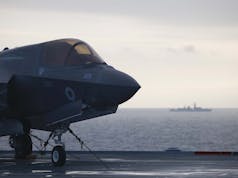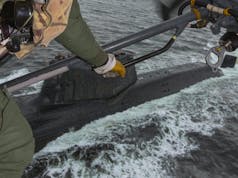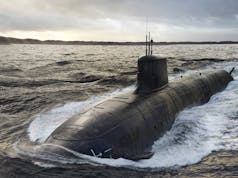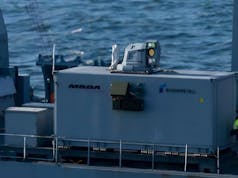The Ministry of Defence has awarded a contract worth £20.5 million to Northrop Grumman UK Ltd for the in-service support of navigation and radar systems across the Royal Navy’s Queen Elizabeth Class (QEC) carriers and other naval platforms.
The contract, announced via a transparency notice, covers the Integrated Navigation and Bridge Systems (INBS) of the QEC aircraft carriers, as well as the VM250 Radar, Astute Ships Inertial Navigation System, and MK39 Gyroscope used across multiple naval platforms.
The awarded contract includes a wide range of support services aimed at maintaining the operational effectiveness of these critical systems. According to the notice:
- “The Contract will include in service core support of the INBS Equipment and Legacy equipment.”
- “The in-service support includes safety management, spares provision, systems repairs, a range of supplementary support tasks and technical support.”
The contract is classified as a Single Source Qualifying Defence Contract and was awarded to Northrop Grumman UK Ltd, based in New Malden. The contract supports the Royal Navy’s flagship carriers, HMS Queen Elizabeth and HMS Prince of Wales, by maintaining the crucial navigation and radar systems that enable effective maritime operations.
The carriers
The Queen Elizabeth-class aircraft carriers are the largest warships ever constructed for the Royal Navy. The class consists of two ships: HMS Queen Elizabeth (R08) and HMS Prince of Wales (R09). The program originated from the 1998 Strategic Defence Review, which identified the need to restore the Royal Navy’s fixed-wing carrier capability after the retirement of the Invincible-class carriers. Construction began in 2009, with HMS Queen Elizabeth launched in 2014 and commissioned in 2017, followed by HMS Prince of Wales in 2019. The carriers were built by the Aircraft Carrier Alliance, a consortium including BAE Systems, Thales Group, Babcock, and the UK Ministry of Defence. The project faced delays and cost overruns, with the final estimated cost for both carriers exceeding £6 billion. The carriers are based at HMNB Portsmouth and form the core of the UK Carrier Strike Group.
The Queen Elizabeth-class carriers have a displacement of approximately 65,000 tonnes and measure 280 metres in length, with a beam of 70 metres. They feature a twin-island superstructure to separate navigation and flight control functions, increasing operational flexibility. The carriers are powered by an Integrated Full Electric Propulsion (IFEP) system, which includes two Rolls-Royce MT30 gas turbines and four Wärtsilä 38 diesel generator sets, delivering a combined 110 MW of power.
This propulsion system allows a maximum speed of 25 knots. The flight deck, covering 16,000 square metres, incorporates a ski-jump ramp designed for launching F-35B Lightning II aircraft. The ships can accommodate up to 36 F-35B aircraft and a range of helicopters, including Merlin, Chinook, and Apache. The carriers feature advanced radar systems, including the Artisan 997 radar, and use Phalanx CIWS and 30mm cannons for close-in defence.
The primary role of the Queen Elizabeth-class carriers is to serve as air power projection platforms. They are designed to support joint operations and can accommodate a crew of around 700, increasing to 1,600 when fully embarked with an air wing. The carriers support multi-role operations, including air superiority, ground attack, maritime strike, and humanitarian missions. They are configured to operate the F-35B Lightning II, a short takeoff and vertical landing (STOVL) aircraft, as well as helicopters for airborne early warning, anti-submarine warfare, and troop transport.














Need to fix the showers first!
Be fair. It’s only been six months!
It’s staggering to even begin to comprehend that in a mere blink of an eye, we went from an envisioned requirement to having two fully equipped, state of the art, world class Mega Carriers able to park off any countries coast and deliver devastating fire power with pin point accuracy day and night, 365 days of the year.
“Ships are but boards, sailoers are men”.